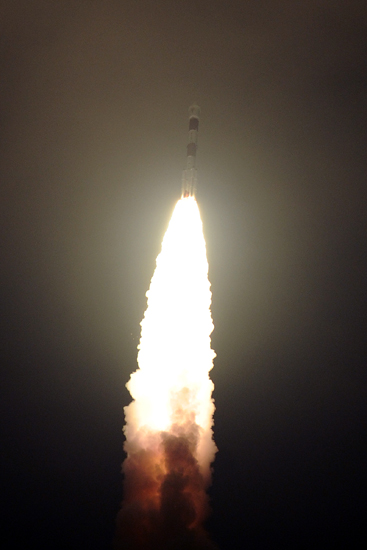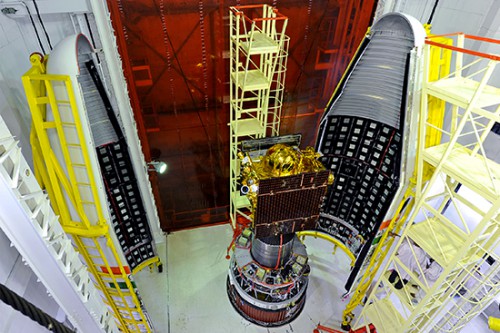[youtube_video]http://youtu.be/nt7EGo2yZvU[/youtube_video]
Video courtesy of ISRO
Within less than 24 hours, one space agency successfully launched a rocket with its spacecraft, as another suffered a spectacular failure. On July 1, 2013, at 2:11 p.m. EDT (11:41 p.m. local time ), an Indian Polar Satellite Launch Vehicle, or “PSLV,” launched the first of seven planned Indian Regional Navigation Satellite System (IRNSS 1A) satellites to orbit. The launch was conducted by the Indian Space Research Organization (ISRO).

The PSLV placed the 3,141-pound satellite into orbit approximately 20 minutes after launch. IRNSS 1A will eventually reside in a geosynchronous orbit at 55 degrees east longitude.
As mentioned, IRNSS will be a series of seven satellites which will be employed to provide real-time navigation and time data to a variety of users. While some aspects of the satellite’s services will be available to the general public, others will only be accessible to the Indian government.
To conduct its mission, the IRNSS 1A spacecraft carries navigation and ranging payloads. These provide the satellite with the ability to transmit navigation service signals. According to the ISRO website, the payload will operate in L5 band (1176.45 MHz) and S band (2492.028 MHz). IRNSS has a rubidium atomic clock which will allow it to keep accurate time.
ISRO plans to have the complete constellation in orbit sometime between now and 2016. Each satellite has an estimated lifespan of a decade, according to the ISRO. It is hoped that this system will provide India with services similar to that of the United States’ Global Positioning System, thus working to create parity with the U.S. system.
This is the first night launch of the four-stage PSLV from India’s Satish Dhawan Space Center. The PSLV is a four-stage expendable launch vehicle. The rocket was developed to send Indian Remote Sensing, or “IRS,” satellites into sun synchronous orbits. The PSLV, which launched yesterday, stood 144 feet tall. It was provided with the additional boost required to get it to orbit by six strap-on solid rocket boosters.
Until the development of the PSLV, this capability was only commercially available via Russian launch vehicles. The irony of this is rich, given the events of the past 24 hours.
A Russian Federal Space Agency (Roscosmos) Proton rocket gyrated wildly out of control shortly after liftoff. It then broke up and slammed into Earth, resulting in a tremendous explosion about eight and a half hours after India’s successful launch. Both payloads were GPS-type satellites.

Want to keep up-to-date with all things space? Be sure to “Like” AmericaSpace on Facebook and follow us on Twitter: @AmericaSpace




One Comment
One Ping
Pingback:NASA Will Support India’s Mars Mission, Despite Government Shutdown « AmericaSpace